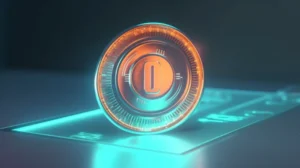How Does AI and 3D Printing Relate?
In today’s technological landscape, artificial intelligence (AI) and 3D printing are two of the most exciting areas of development. Both have the potential to revolutionize the way we live and work, and their relationship is crucial to unlocking their full potential.
In this article, we’ll explore the relationship between AI and 3D printing, their definitions, brief history, and applications. We’ll also examine the advantages of using AI and 3D printing together, potential future developments, and their impact on various industries.
AI and 3D Printing: What Are They?
AI refers to the ability of machines to learn and perform tasks that typically require human intelligence, such as recognizing speech or making decisions. 3D printing, on the other hand, is the process of creating three-dimensional objects from a digital model. The technology involves layering materials until the desired shape is formed.
AI has been in development since the 1950s, and 3D printing since the 1980s. Both were initially used in specialized fields such as aerospace and medicine. However, in recent years, their use has expanded to a wide range of industries, including automotive, architecture, fashion, and entertainment.
The Relationship between AI and 3D Printing
AI and 3D printing work together in various ways. For instance, AI can be used to optimize the design of 3D models, making them more efficient and cost-effective. AI can also be used to analyze data from 3D printing sensors, improving the accuracy and precision of the printing process.
Examples of AI and 3D printing applications include the use of AI algorithms to optimize the design of prosthetic limbs and the use of 3D printing to create customized hearing aids. In the automotive industry, AI and 3D printing are used to create lightweight parts that improve fuel efficiency.
Advantages of Using AI and 3D Printing Together
The combination of AI and 3D printing offers several advantages. Firstly, it is cost-effective and efficient. The use of AI in the design process reduces the need for costly and time-consuming iterations. Secondly, it improves accuracy and precision. The use of AI algorithms in the printing process ensures that the final product meets the desired specifications. Thirdly, it increases speed and customization. The use of 3D printing allows for rapid prototyping and customization of products, while AI speeds up the design process.
Potential Future Developments
AI and 3D printing technology are rapidly evolving, and there are many potential future developments. For example, AI algorithms could be used to optimize the printing process in real-time, improving efficiency and reducing waste. 3D printing technology could be used to create larger, more complex objects, such as buildings and infrastructure.
Conclusion
In conclusion, understanding the relationship between AI and 3D printing is crucial for unlocking their full potential. The combination of these technologies offers numerous advantages, including cost-effectiveness, efficiency, accuracy, precision, speed, and customization. As these technologies continue to evolve, we can expect to see even more innovation and growth in various industries.






